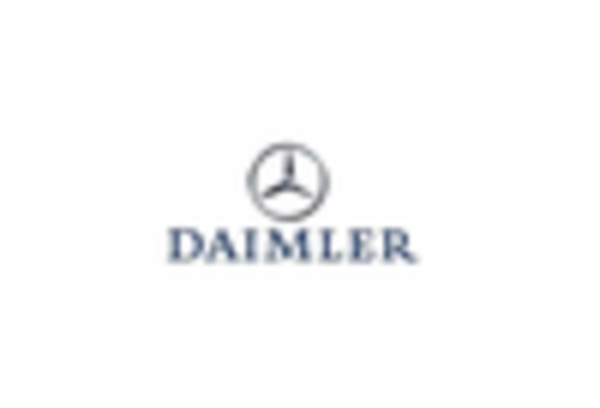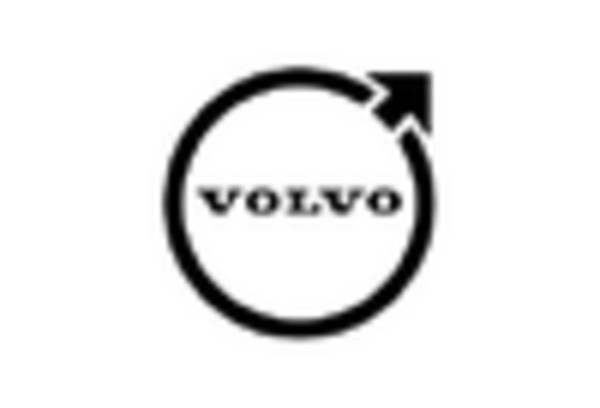Rising Demand for Heavy-Duty Vehicles
The Vehicle Diesel Engine Market is experiencing a notable increase in demand for heavy-duty vehicles, particularly in sectors such as construction, logistics, and agriculture. This trend is driven by the need for efficient transportation and the ability to handle substantial loads. According to recent data, the heavy-duty vehicle segment is projected to account for a significant share of the diesel engine market, with a compound annual growth rate (CAGR) of approximately 4.5% over the next few years. The durability and reliability of diesel engines make them a preferred choice for these applications, further solidifying their position in the Vehicle Diesel Engine Market. As industries expand and urbanization continues, the reliance on heavy-duty vehicles is likely to persist, thereby enhancing the demand for advanced diesel engine technologies.
Growing Infrastructure Development Projects
The Vehicle Diesel Engine Market is benefiting from the surge in infrastructure development projects across various regions. Governments are increasingly investing in transportation networks, including roads, bridges, and railways, which necessitates the use of heavy machinery powered by diesel engines. This trend is particularly evident in emerging economies, where infrastructure expansion is a priority. Data suggests that infrastructure spending is expected to grow at a rate of 5% annually, creating a robust demand for diesel-powered construction equipment. As these projects unfold, the Vehicle Diesel Engine Market is poised to capitalize on the increased need for reliable and powerful engines that can withstand the rigors of construction and heavy-duty applications.
Regulatory Compliance and Emission Standards
The Vehicle Diesel Engine Market is significantly influenced by the evolving regulatory landscape concerning emissions and environmental standards. Governments worldwide are implementing stricter regulations aimed at reducing greenhouse gas emissions and improving air quality. This has prompted manufacturers to innovate and develop cleaner diesel technologies, such as low-emission engines and alternative fuel options. The market is witnessing a shift towards engines that not only meet but exceed these regulatory requirements. Recent reports indicate that compliance with new emission standards could drive a 10% increase in the adoption of advanced diesel technologies. As regulations tighten, the Vehicle Diesel Engine Market must adapt, ensuring that products align with both consumer expectations and legal mandates.
Technological Innovations in Engine Efficiency
Technological advancements in engine efficiency are playing a crucial role in shaping the Vehicle Diesel Engine Market. Innovations such as turbocharging, direct fuel injection, and advanced exhaust after-treatment systems are enhancing the performance and reducing emissions of diesel engines. These improvements not only comply with stringent environmental regulations but also appeal to consumers seeking fuel-efficient options. Recent statistics indicate that the efficiency of modern diesel engines has improved by nearly 20% compared to older models, which is a significant factor in their continued popularity. As manufacturers invest in research and development, the Vehicle Diesel Engine Market is likely to witness further enhancements in engine technology, leading to better fuel economy and lower operational costs.
Increased Adoption of Diesel Engines in Marine Applications
The Vehicle Diesel Engine Market is also seeing a rise in the adoption of diesel engines in marine applications, including commercial shipping and recreational boating. Diesel engines are favored in these sectors due to their fuel efficiency, reliability, and ability to provide high torque at low speeds. The marine diesel engine market is projected to grow at a CAGR of around 3.5% over the next few years, driven by the expansion of global trade and the need for efficient transportation of goods. Additionally, advancements in marine diesel technology are enhancing performance and reducing emissions, aligning with environmental regulations. As the demand for marine transportation increases, the Vehicle Diesel Engine Market is likely to benefit from this trend, further solidifying the role of diesel engines in maritime operations.


















Leave a Comment